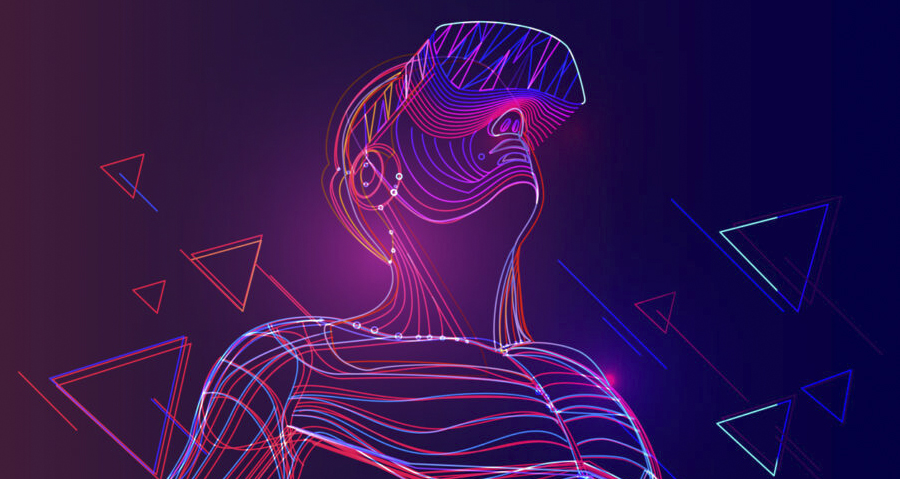The rapidly evolving digital world is offering ground-breaking technologies such as virtual reality (VR) and 3D modeling, significantly impacting the way we interact with digital content. These advancements are reshaping numerous sectors, including entertainment, gaming, education, and healthcare. In this comprehensive guide, we will delve into the unique features and applications of 3D graphics in VR, while also exploring the exciting future prospects of this innovative combination. Whether you're a developer, designer, educator, or just an enthusiast looking to buy 3D models online, understanding these dynamics can facilitate more informed decisions.
Understanding 3D Graphics in Virtual Reality
Virtual reality, at its core, provides a simulated experience that can be akin to or utterly different from the real world. This technology leverages 3D models to craft this immersive environment. 3D models are digital representations of physical entities, created using specialized 3D modeling software. When deployed in VR, these models bring an unparalleled depth, dimension, and detail to the scene, transforming the way users perceive and interact with digital content.
Unique Features of 3D Graphics in VR
Immersive Experience
The power of VR primarily lies in its ability to provide immersive experiences, creating a feeling of being present in a different reality. 3D models augment this strength by constructing realistic, tangible objects with which users can interact. This interaction takes user engagement to unprecedented heights, increasing the appeal and demand for VR applications in various fields.
Detailed Visualization
High-quality 3D models have the ability to render intricate details accurately. This capability is essential in a VR environment, where a realistic depiction plays a crucial role in enhancing the user's sense of immersion and overall experience. The ability to scrutinize objects closely, from any angle, significantly improves user interaction and satisfaction.
Interactivity
3D graphics in VR enable users to manipulate objects, contributing to a more dynamic and interactive environment. Users can perform actions like picking up, moving, or even disassembling objects, depending on the application's purpose. This feature is particularly valuable in educational and training contexts, where hands-on experience is pivotal.
Spatial Awareness
In a 3D VR environment, users gain a profound sense of spatial presence. This perception is vital for applications like architecture, interior design, gaming, and more, where understanding the nuances of space, size, and scale can dramatically impact the user experience and effectiveness of the task at hand.
Future Prospects of 3D Graphics in VR
Gaming and Entertainment
The gaming and entertainment industry is one of the primary beneficiaries of VR and 3D graphics. As gamers increasingly demand more immersive experiences, the role of 3D graphics in VR games is set to grow exponentially. We can anticipate a future filled with more realistic, engaging, and interactive VR games that blur the line between reality and fantasy.
Education and Training
The education and training sector is ripe for disruption with the integration of VR and 3D modeling. VR can simulate real-world scenarios for training and education, making learning more practical and engaging. With 3D models, these simulations become incredibly lifelike, leading to more effective training outcomes and a deeper understanding of complex concepts.
Healthcare
In the realm of healthcare, the amalgamation of VR and 3D modeling is opening up unprecedented possibilities. From surgical simulations to patient therapy and medical education, this technology is poised to revolutionize the industry. Imagine a future where surgeons can practice complex procedures in VR before operating on a real patient or therapists using VR to help patients overcome phobias or post-traumatic stress disorder.
Real Estate and Architecture
3D VR tours of properties and architectural designs are rapidly gaining popularity in the real estate and architectural sectors. These immersive tours provide clients with a realistic view of the property or design, giving them a sense of spatial awareness and design aesthetics that traditional 2D blueprints cannot offer. As a result, customer satisfaction increases, and sales conversions are more likely.
Retail and E-commerce
The retail and e-commerce sectors are also beginning to realize the potential of 3D graphics in VR. Imagine a future where customers can try on clothes or check out furniture in their home using VR before making a purchase. This kind of interactive shopping experience can significantly enhance customer engagement and satisfaction, potentially boosting sales.
Conclusion
The convergence of 3D graphics and virtual reality is paving the way for extraordinary experiences and transforming numerous industries. As VR technology continues to evolve, the importance of high-quality 3D models will only become more pronounced.
Looking towards the future, we can expect VR applications to become even more prevalent, from enhancing our daily lives to revolutionizing professional fields. Therefore, whether you're an early adopter, a forward-thinking business, or a creative professional, it's essential to stay updated with these developments and understand the value they can bring to your endeavors.
At 3d-baza, we're committed to helping you stay ahead of the curve and bring your VR visions to life. We offer an extensive collection of high-quality 3D models that can meet your VR project's needs. Start your VR journey with us today, and let's shape the future together.

